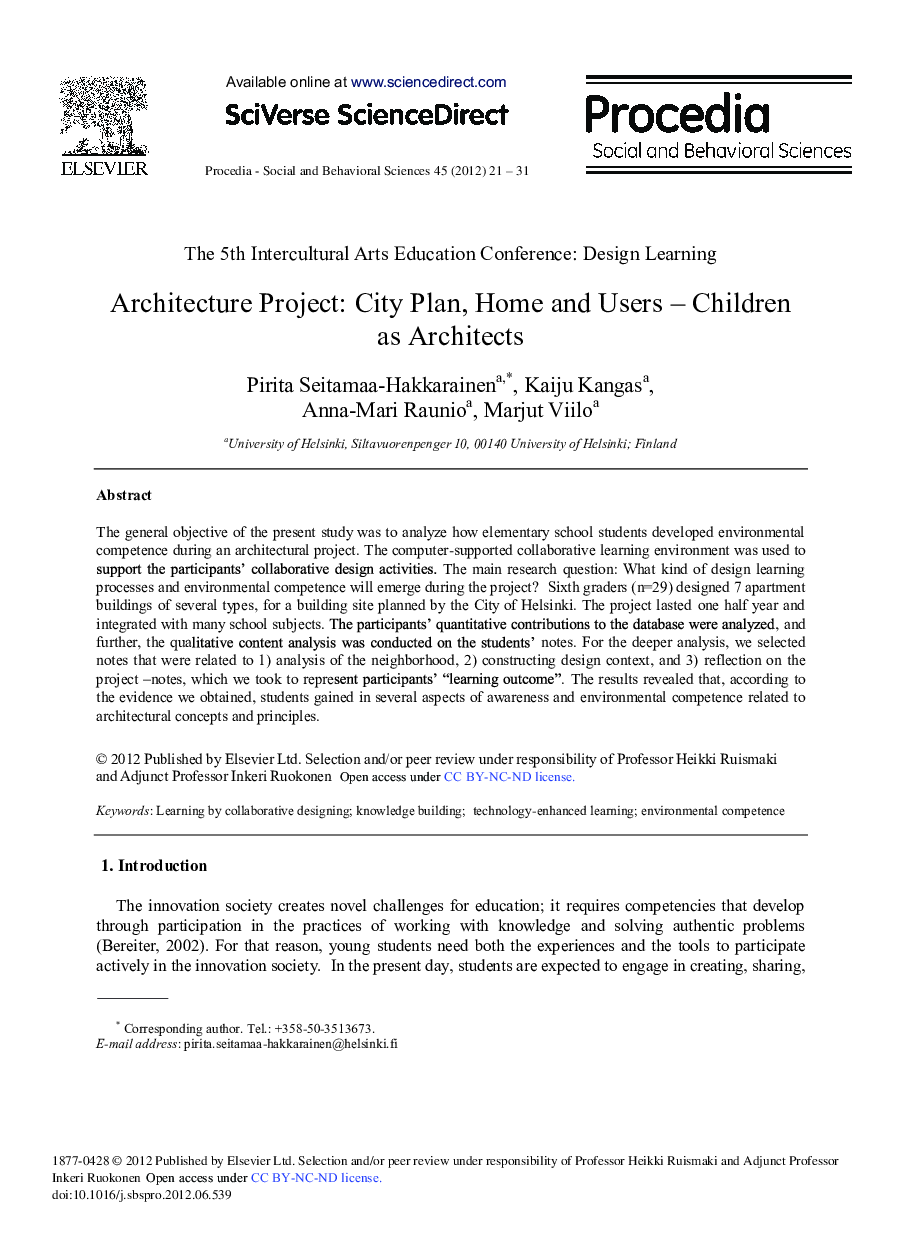| Article ID | Journal | Published Year | Pages | File Type |
|---|---|---|---|---|
| 1121806 | Procedia - Social and Behavioral Sciences | 2012 | 11 Pages |
The general objective of the present study was to analyze how elementary school students developed environmental competence during an architectural project. The computer-supported collaborative learning environment was used to support the participants’ collaborative design activities. The main research question: What kind of design learning processes and environmental competence will emerge during the project? Sixth graders (n=29) designed 7 apartment buildings of several types, for a building site planned by the City of Helsinki. The project lasted one half year and integrated with many school subjects. The participants’ quantitative contributions to the database were analyzed, and further, the qualitative content analysis was conducted on the students’ notes. For the deeper analysis, we selected notes that were related to 1) analysis of the neighborhood, 2) constructing design context, and 3) reflection on the project –notes, which we took to represent participants’ “learning outcome”. The results revealed that, according to the evidence we obtained, students gained in several aspects of awareness and environmental competence related to architectural concepts and principles.
